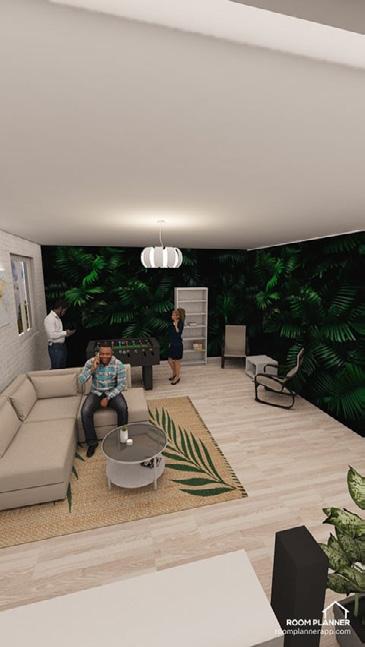
3 minute read
Global: Creative Space | Kūrybinė erdvė
Kristina Jaskyte Bahr uses Design Thinking to spark innovation in an online Lithuanian classroom

Kristina Jaskyte Bahr
Photo by Stephen Bridges
by Laurie Anderson
Kristina Jaskyte Bahr delights in showing people how to come up with creative ways to solve problems. The associate professor of the nonprofit management and leadership program at the School of Social Work teaches Design Thinking—a systematic approach to problem-solving that uses humancentered techniques to develop innovative solutions.
An innovator herself, in 2020 Jaskyte Bahr received UGA’s Service-Learning Teaching Excellence Award and was selected for the highly competitive Innovation Bootcamp program for female entrepreneurs.
So it’s no surprise that when travel restrictions due to COVID-19 forced Jaskyte Bahr to cancel a teaching trip to Lithuania, the Lithuanian-born academic got creative. The Lithuanian Ministry of Education had invited Jaskyte Bahr to teach a seven-weeklong Design Thinking workshop for students and faculty of the Lithuanian University of Health Sciences.
“I was supposed to teach in person, but because of COVID, I had to design a whole new set of workshops,” she said.
Instead of canceling the course—the first of its kind at that university, and possibly in the country—Jaskyte Bahr found a work-around using the digital tools Zoom and Mural. Zoom allowed Bahr to engage remotely with students in classroom discussions about the Design Thinking process.
Mural, an online canvas that students could interact with and share, enabled small groups of students to collaboratively visualize problems and plan solutions.
The workshop was comprised of 22 students who worked in four teams. Each team was tasked with using the Design Thinking method to develop a solution to a social challenge. Because of COVID-19, the short length of the course and the online format, Jaskyte Bahr said the students defined and focused on just four student-related problems:
1. How can we learn about and understand which methods of distance learning are most effective for students?
2. How can working students find time for themselves?
3. How can we help students feel less stressed out?
4. How can we help teams establish their work principles for effective collaboration?
For the first stage of the Design Thinking process students were required to develop a deep understanding of the stakeholders—in this case their peers—through interviews, empathetic listening, observation and research.
“Each student had to interview at least two people during one week's period that we had dedicated to empathy,” said Jaskyte Bahr. “They also had some in-class time to interview each other, because they were stakeholders in all four team projects.”
The information that students collected in the first stage enabled them to more accurately define the problems. They also gained insights that were useful for the next stage—brainstorming possible solutions.
After brainstorming, each team selected the solution that best met the stakeholders’ needs. In the final stage, they designed and tested a prototype of the solution.
The solutions could be anything.
For example, in response to the third question, one team designed a campus “Relaxation Oasis.” The student reaction to the prototype was so positive that the team planned to present the design to the dean of the university’s public health department.

Mural design for the campus "Relaxation Oasis"


Mural design for the campus "Relaxation Oasis"
Another team designed an app that would facilitate teamwork. The app featured icebreakers, personality tests to match collaborators, information about each team member’s likes, dislikes, strengths and weaknesses, and a project planner with timelines.
“Each team member would show the progress they've made on the project and ask questions of other team members,” said Bahr. “It would be structured in such a way that team members would have to complete tasks in order to progress to the next level of the project management.”
Jaskyte also taught a separate workshop for 35 faculty from different departments on how to use a broad range of Design Thinking tools. Faculty primarily expressed interest in using Design Thinking for developing interventions and future research projects, but realized it had more applications.
"Thanks to the training that inspired me, I realized that I can use design thinking in any field, and that creativity liberates (the groups had an atmosphere of laughter, relaxation, and rejoicing),” wrote one participant.
Though she still prefers in-person learning of Design Thinking, Jaskyte Bahr was pleased that the remote experience was fruitful. “The ability to innovate is critical for nonprofit organizations' effective response to changing environmental conditions,” said Jaskyte Bahr.
And also for teaching and learning in the time of COVID.










